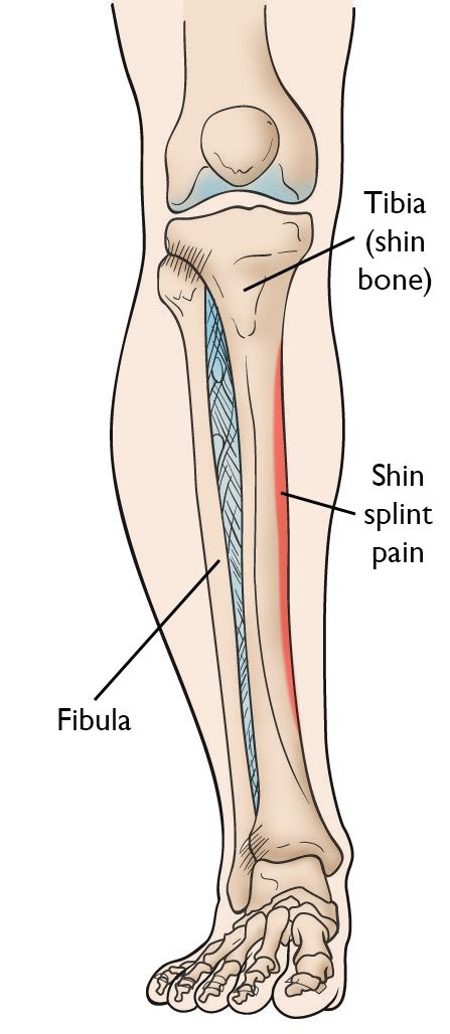Shin splints, or Medial Tibial Stress Syndrome, is a pain that is experienced along the shin bone that can occur for many different reasons but most commonly by running. It comes on due to repeated stress along the attachment of where the muscles from the foot and ankle attach to the bone. The repeated microtraumas will start to cause a stress reaction in the bone. It is one of the most common running injuries, occurring at a rate of 12-20% of all running-related injuries. Without intervention and without modification of activities, the stress reaction can lead to a stress fracture, which can be debilitating and will force you to take time away from your sport or activity.
There are several factors that can lead to shin splints. Near the top of the list is rapidly increasing training. If you go from the low activity and suddenly increase what you are asking of your body, your body will not be able to handle the excess stress, which will lead to some of the pain starting on the inside of the shins. Other factors that can lead to an increase in pain are flat feet, weak ankles, or improper footwear.
So, what can you do to treat shin splints? The best way to treat any injuries, especially stress or overuse injuries is to stop them before they even come up. Following a progressive training plan with small increases, rather than big jumps in training volume and intensity, making sure I am wearing the right footwear, cross-training, or mixing up what I am doing so that I am not always causing the same stress to my body. However, if you do get symptoms, it is something that you will want to take care of as soon as possible. Working on calf stretching as well as foot strength (check out this great foot exercise) can help remove some of the stress that is being applied to the tissues. If these do not take care of the pain on their own, then a further medical evaluation may be required, which may involve an x-ray or advanced imaging, to determine what will be the best move to get you back to your favorite activities while limiting the risk of further injuries.
If you think that this is something that is affecting you or if you have any questions on shin splints, please contact our office, and talk with one of our doctors to see what treatment or preventative measures will be best for you.

